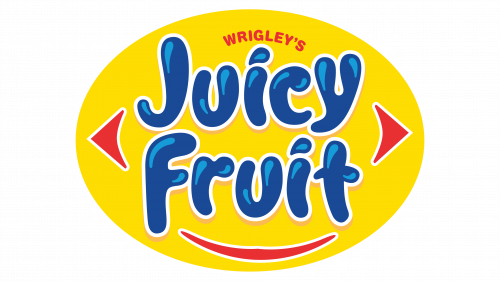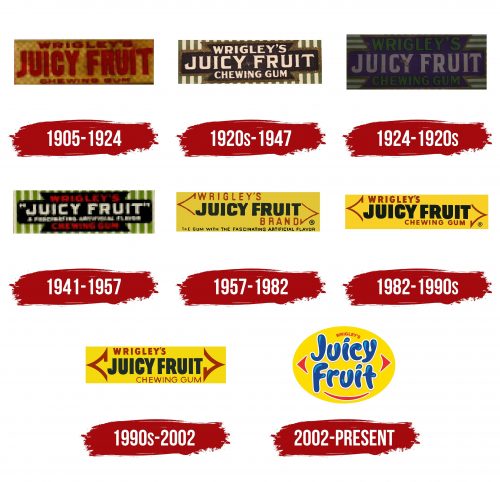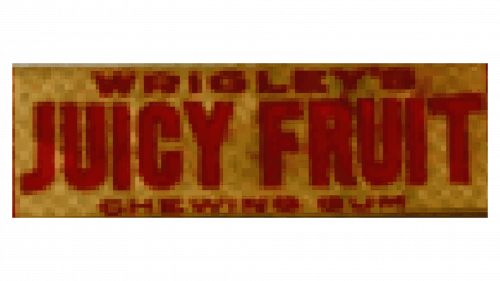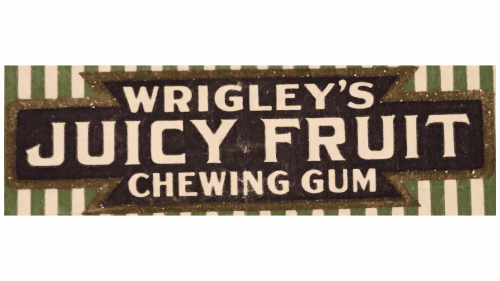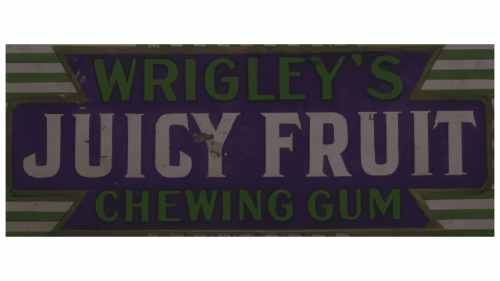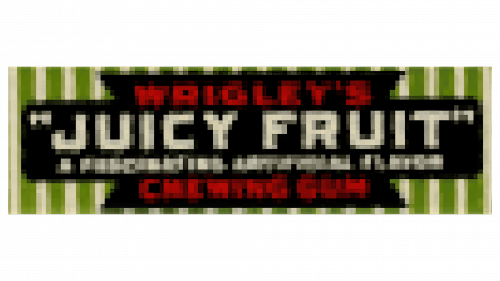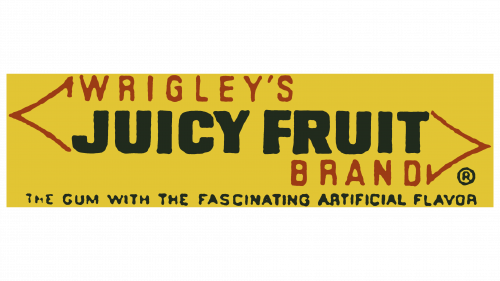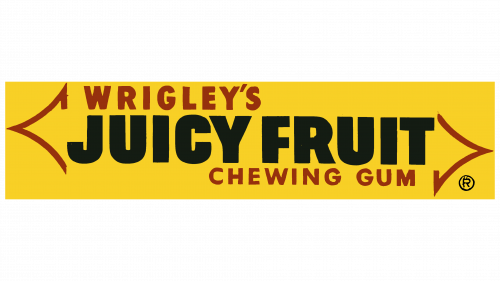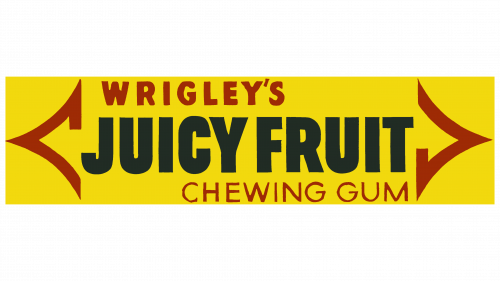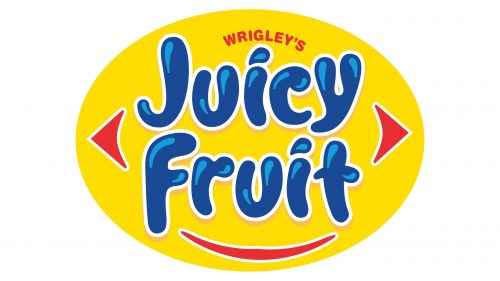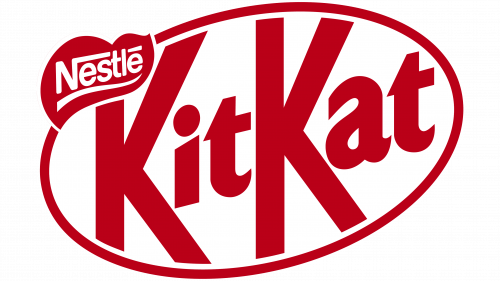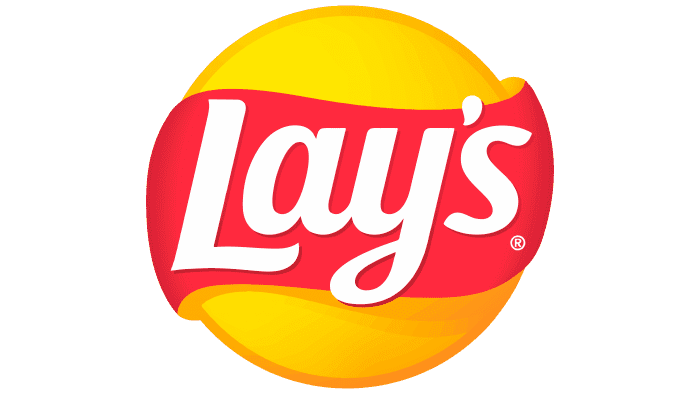The Juicy Fruit logo resembles a sweet, fruity capsule, attracting attention with its friendliness and childlike simplicity. The emblem evokes associations with a smile and highlights the variety of flavors the brand offers.
Juicy Fruit: Brand Overview
The chewing gum known as Juicy Fruit was first introduced to the American market in 1893 by William Wrigley Jr., the founder of the Wm. Wrigley Jr. Company. Wrigley started out selling baking powder and soap and included chewing gum as a bonus with his goods. But the gum gained so much traction that Wrigley chose to concentrate on making it.
One of Wrigley’s first chewing gums, this product immediately became well-known thanks to its distinct fruity flavor. The exact flavoring recipe has always been a trade secret, adding to the product’s allure and piquing consumers’ curiosity. Initially, the gum was sold as single, paper-wrapped sticks. The packaging was straightforward and practical, and its unique yellow hue was the brand’s signature.
Like many other consumer products, production was restricted during World War II due to ingredient shortages. Nevertheless, Wrigley continued to provide gum to US military personnel, boosting soldier morale and contributing to the company’s success after the war.
The gum symbolized American popular culture in the 1950s and 1960s. The brand was heavily promoted on radio and television with catchy slogans and jingles. The most well-known was “The taste is gonna move ya,” which emphasized the vivid, fruity flavor of the gum.
Wrigley started bringing the product into foreign markets in the 1970s. As the gum adapted to local tastes and preferences, it became popular worldwide. The business experimented with innovative package types, such as huge family packs and multipacks.
Innovations in gum manufacturing and packaging characterized the 1980s and 1990s. The business developed innovative technology to keep the gum tasting fresher for longer. Additionally, new shapes, including pillows and gumballs, were introduced.
The brand remained one of Wrigley’s most important products in the 2000s. The corporation invested heavily in marketing and advertising to attract a younger customer base. New varieties like watermelon and strawberry enhanced the traditional fruity flavor.
The acquisition of Wrigley and its products by Mars, Incorporated, in 2008 marked a key milestone for the company. This acquisition opened new avenues for the brand’s growth and international market penetration.
The gum kept adjusting in the 2010s to reflect shifting consumer tastes—the increased demand for healthier products led to the introduction of sugar-free and reduced-sugar versions. The business experimented with limited-edition tastes to keep consumers interested in the brand.
A brand-new product range, Starburst Fusion, debuted in 2015. This creative line blended the traditional fruity flavor with well-liked Starburst candy fruit flavors, such as cherry and strawberry. This partnership between two well-known Mars brands aimed to reach a wider audience and provide them with a more extensive taste selection.
“Flavor Collisions,” a chewing gum that blended two distinct flavors into one, was introduced in 2017. The increasing popularity of “flavor adventures” among consumers—particularly young people—led to the development of this product. Combinations like “Strawberry and Watermelon” and “Tropical Fruits and Punch” offered a distinctive taste experience.
The classic product line was relaunched in 2019. The company unveiled a new packaging design that looked more contemporary while keeping the brand’s iconic yellow hue. A marketing campaign was launched with the redesign, aiming to draw in new and devoted customers.
In 2020, the range of sugar-free products was expanded with new flavors. This decision addressed the increasing demand for healthier chewing gum substitutes. The distinctive flavor was preserved despite the new items’ employing natural sweeteners.
A digital campaign was launched in 2021 to enhance the brand’s social media presence. The campaign helped the brand connect with a younger audience and adjust to the shifting media landscape by generating interactive content, collaborating with influencers, and setting up social media challenges.
In 2022, a new product range was introduced under “Naturals.” This inventive collection was created in response to the increased customer need for more natural products. “Naturals preserved the brand’s distinctive fruity flavor while showcasing plant-based ingredients and natural sweeteners. Several popular fruit tastes, like mango, acai berries, and green apple, were featured in the collection.
The year 2023 saw the introduction of the global marketing initiative “Taste the Joy.” This campaign aimed to link the brand to happy feelings and ordinary moments of happiness. The campaign featured several commercials featuring individuals of all ages and ethnicities savoring the gum in various settings.
Additionally, in 2023, a line of vitamin and mineral-enriched chewing gum named “Boost” was introduced, further increasing its market share. This new range was created in response to the increasing consumer desire for entertaining and health-promoting products. “Boost” featured selections with extra zinc for tooth health, B vitamins for vitality, and vitamin C for immune support.
The same year, the company invested in growing its online store. A redesigned online store with unique items and packages exclusively accessible online was unveiled. With this project, the company hopes to attract a wider audience in the digital age by improving accessibility and convenience for customers.
Meaning and History
What is Juicy Fruit?
It is a classic brand of chewing gum produced by the Wrigley Company, a subsidiary of Mars, Incorporated. Known for its distinctive sweet, fruity flavor, it has been a favorite among chewing gum lovers for generations. The exact flavor profile of the chewing gum is kept a closely guarded secret, often described as a combination of banana and pineapple. However, the company has never officially confirmed the specific ingredients. The brand comes in various formats, including traditional chewing gum, tablet chewing gum, and bubble gum. Over time, the brand has expanded its product line to include sugar-free options and different flavor variations while maintaining its core original flavor. Recognizable for its bright yellow packaging and long-lasting flavor, the brand has replaced the iconic American chewing gum brand. Its widespread popularity and instantly recognizable flavor have made it a staple in stores, supermarkets, and vending machines throughout the United States and many other countries.
1905 – 1924
The first logo was simple and informative. It featured the brand name and the manufacturer. The red letters grabbed attention, highlighting the novelty and boldness of the flavor, which was a unique offering in the market.
1920s – 1947
As the product’s popularity grew, a new packaging design was created. The logo adopted a striped look with vertical white and green lines, emphasizing the product’s uniqueness—individual chewing gum strips wrapped in paper. The green color symbolized the natural ingredients and refreshing taste of the gum. The name “Wrigley’s Juicy Fruit” was placed on a thin black plate shaped like a Maltese cross, making the logo recognizable and memorable.
1924 – 1920s
The vertical stripes in the logo were replaced with horizontal ones, more accurately reflecting the placement of the gum in the packaging. The change in color scheme brought the design closer to natural themes and associated it with the minty flavors of other Wrigley’s products.
1941 – 1957
During this period, the wrapper returned to the design from the early 1920s with vertical stripes, but the color scheme was updated. A message about the “Fascinating artificial flavor” was added, and the company name and product category were red to stand out against the new multicolored palette.
1957 – 1982
In 1957, Juicy Fruit Gum introduced an arrow design that became recognizable to consumers worldwide. The manufacturers aimed to standardize the packaging across all company products, and the arrows on the logo symbolized the ease of removing a strip from the wrapper. The yellow background highlighted the fruity flavor and aroma, while the bold black letters of the brand name stood out in contrast against the light background. Additional text was written in a thin red font, framing the main part of the logo and giving it a finished look.
1982 – 1990s
The logo’s transformation in 1982 made the lettering more balanced and harmonious. The thickness and width of the letters were carefully adjusted to fill the background better, while the brighter yellow color of the base added extra appeal and freshness to the logo.
1990s – 2002
During this period, the Juicy Fruit logo underwent significant changes to improve symmetry and clarity. The arrows became thicker and evenly spaced, enhancing the sense of dynamism. The letters in the brand name were elongated, creating an association with the long strip of chewing gum. The lighter background became more contrasting, improving the text’s readability and sharpness.
2002 – today
The new Juicy Fruit logo is a bright and cheerful symbol that instantly evokes fruity freshness and sweet flavor associations. The round shape of the emblem, reminiscent of an orange or lemon, immerses you in the atmosphere of a juicy fruit and enhances the feeling of freshness that the chewing gum offers.
The blue, bold letters used in the name resemble drops of juice. This association makes the logo visually dynamic as if it’s shimmering and playing in the light. Thanks to this design choice, the text reads as a word and has a nearly tactile effect, as if each character is filled with the juiciness and energy the product promises.
The red arrows, retained in the new design, have taken on a more cartoonish appearance, adding an element of playfulness and fun. These arrows hint at movement, pointing to the brightness and dynamism of the product itself. They draw attention and create a sense of direction, inviting you to follow them and try chewing gum.
A special feature is the lower line of the emblem, transformed into a smile. This element gives the logo a friendly and positive character, making it resemble a smiley face when viewed from a distance. The smile flirts with the audience, evoking warm and joyful emotions. This design choice is particularly effective in attracting a younger audience, for whom such details are important and memorable. The smile invites you to try Juicy Fruit, promising fun and enjoyment with every piece of gum.
The logo’s bright yellow background enhances the feeling of sunlight and warmth, complementing the juiciness and fruity delight concept. The yellow color evokes positive emotions associated with joy and optimism.
The modern design of the visual identity has managed to preserve elements recognizable and loved by many generations while adapting them to the new realities and preferences of the audience. As a result, the brand remains relevant, continuing to delight consumers with its energy and flavor.
